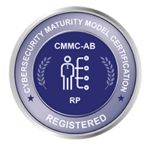
The mobility landscape is rapidly changing as more EMM (Enterprise Mobility Management) providers consolidate solutions. With many of these acquisitions, enterprise mobility providers lay off support resources for the acquired technology and render themselves unprepared to adequately address higher tier support tickets. The result is oftentimes a “nowhere to go” scenario for the customer looking for support or added functionality in future product versions.
Considering the nature of software acquisitions, one must wonder about BlackBerry’s recent acquisition of Good Technology. What does it mean for the future? Where does BlackBerry go from here? How many subject matter experts will they keep from Good Technology for support and dev? Regardless, some GFE customers have a history with BlackBerry leading them to wonder if this migration is just a dangling carrot for an effective EMM:
BES garnered reasonable market share between the late 1990’s and late 2000’s when BlackBerry devices dominated the enterprise market, but steadily lost customers to competitors like Good Technology who offered viable EMM functionality with support for the increasing numbers of BYOD devices that were invading enterprises back then. Blackberry’s apparent decline became fodder for conversation across the industry, including sharp criticism from AirWatch CEO John Marshall for BlackBerry’s unwillingness to allow cross-platform MDM (Mobile Device Management) solutions to support their handsets – essentially forcing Blackberry 10 users to buy BES10 to fully secure their devices. Nine months after Marshall’s critique, BlackBerry opened the door for other MDMs to support BlackBerry 10 OS, but competitors like Good had already provided fast-track services for organizations seeking migration away from BES.
To the surprise of many, BlackBerry turned the tables last November by completing its acquisition of Good Technology – bringing the EMM migration story full-circle. GFE customers who left BES years ago are now facing GFE end-of-life dates which is forcing them to migrate back to BES for continued service while the new GFE/BES hybrid, Good Secure EMM Suite, is being assimilated. With this full integration lying somewhere in the unknown future, there has to be doubt about what the final product will look like. One thing is certain: More mergers and acquisitions are likely, integrations a constant possibility, and uncertainty about the future of their EMM seems to linger. Will BlackBerry be able to hold serve or will it be sold? Will BlackBerry continue to acquire other software for yet more seemingly endless integrations? What will the Good Secure EMM suite look like 12 months from now? These are important questions to ask – and are being asked – by the organizations being asked to flip-flop back to BES.
Alternatives to BES?
The ISV (Independent Software Vendor) community is seeing the turmoil and is looking to capitalize. One such ISV is SyncDog, which offers a best-in-class FIPS-certified* secure container with a wide array of applications for a multitude of workflows. The SentinelSecure™ containerized workspace can be sold as standalone or bundled with a number of different EMM solutions. SentinelSecure™ holds certified integration with MobileIron, Notify Technology and Snow Software.
The mobile security ISV community is growing and SyncDog has been a steadily-growing member since 2013. How can ISV’s compete with enterprise vendors such as BlackBerry and VMware (AirWatch):
- Because ISVs are smaller and work more collaboratively, they are able to keep step with market trends and tend to be more responsive to evolving customer requirements.
- Because ISVs are more focused, their solutions are more focused – i.e. they don’t try to be everything to everyone. In the SyncDog case, we know we do containerization well and are focused on building a roadmap that supports a best-in-class container. We focus on encrypting and protecting your apps and data in the most secure device partition available.
- ISVs are also more flexible with payment options and solution builds that fit customer needs and development requirements. We are willing to work with customers on flexibly-priced solutions that fit budget requirements.
- ISVs build solutions that hone in on functional excellence. There is arguably no such thing as “out of the box” anymore because datacenters and employee needs are heterogeneous collections of complexity. One size can’t fit all and enterprises need vendors who listen and solve issues.
Because ISVs are simpler to work with and build more focused solutions, our clients’ migration experiences are also simpler and easier. How easy is it to migrate to SyncDog SentinelSecure™?
- While in your EMM, export user data to a CSV file.
- Log in to the SentinelSecure™ dashboard.
- Go to the wizard in SentinelSecure™ and in a few clicks your users are automatically added.
If you’re weighing the pros and cons of migrating to BES and want to see what SyncDog has to offer, click here and request a live demonstration of SentinelSecure™.
See for yourself how easy migrating to SentinelSecure™ can be. Click here to download our migration guides.
For more information about SentinelSecure™, click here.
*FIPS 140-2 Certification (#2687)
